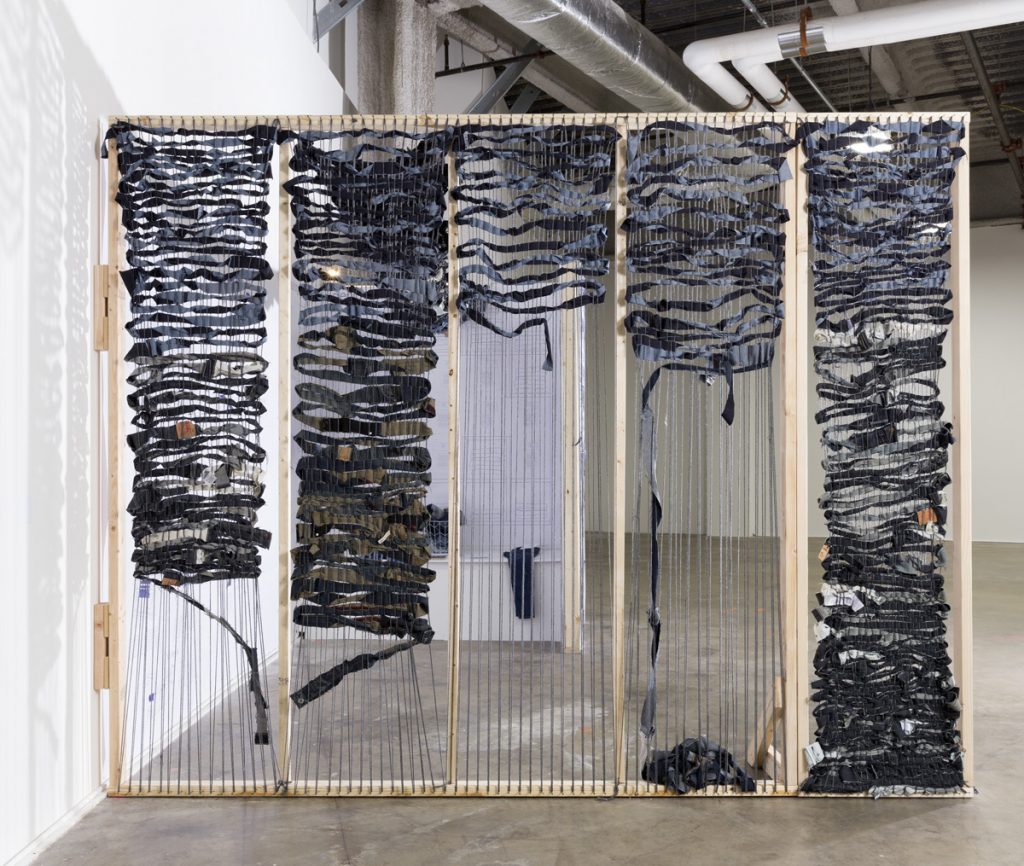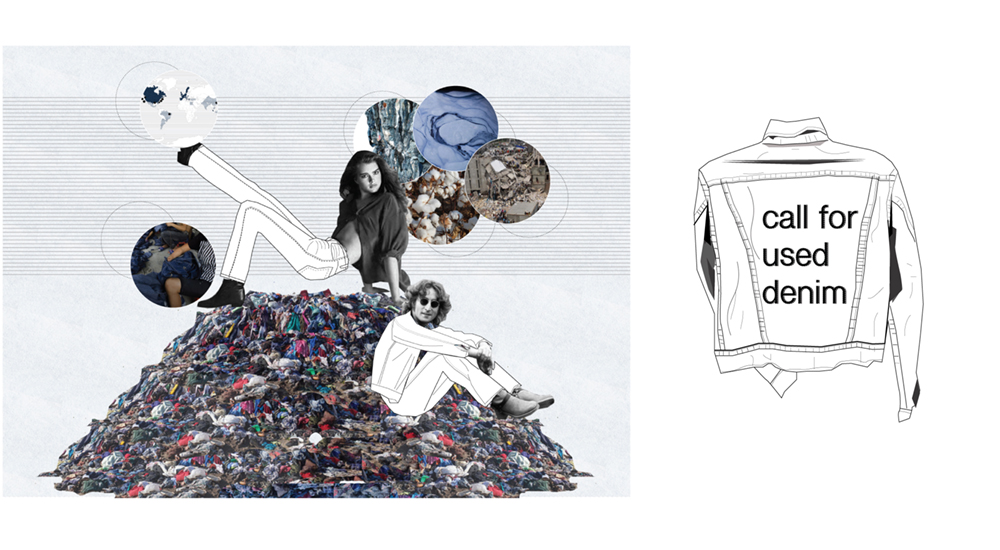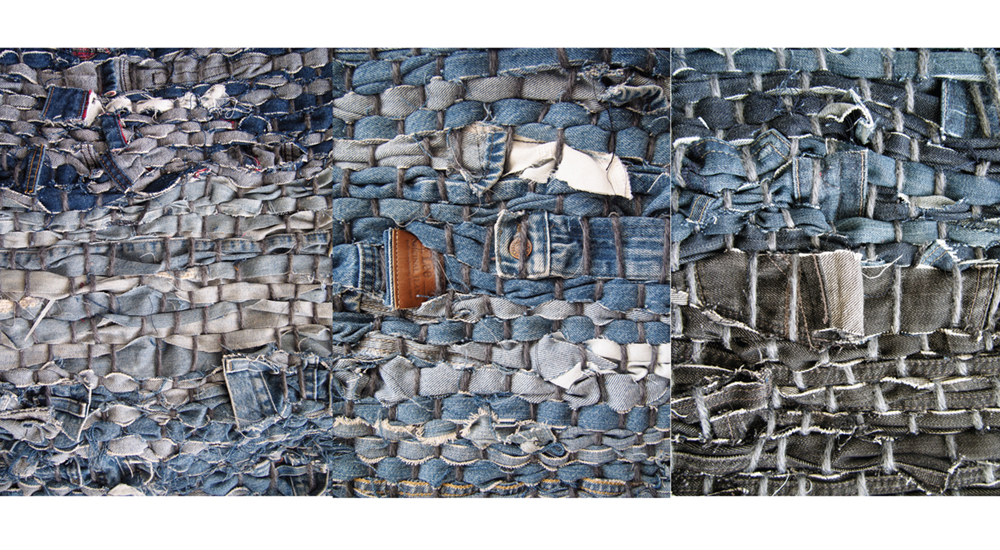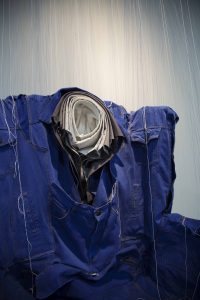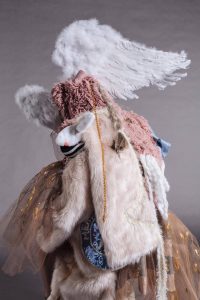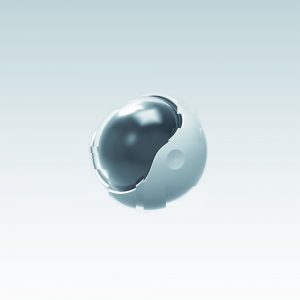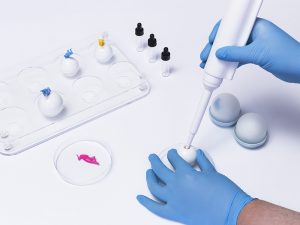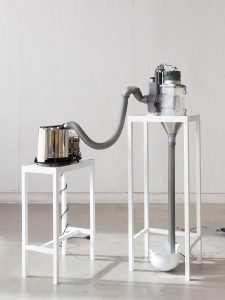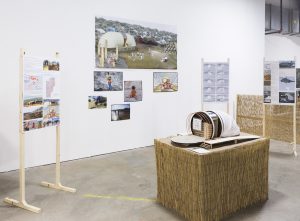Jeanealogies: Denim’s Spatial Metabolisms explores the role of architecture as a discursive practice by examining the lives of our used denim in our built environment. Architecture plays an active role in the processes and dispersion of industry where it either conceals or reveals industry’s networks and consequences. The thesis propels a reassessment of our relationship to clothing waste focusing on the denim industry as a case study. The denim industry serves as crucial focus to be able to integrate denim’s cultural material properties into a visible discussion about waste, empathy, and culture. Denim serves a wide audience in its production and wear, arguably transcending class, time, race, gender, and style. Responding to the current political climate, the appeal for the return of industry back to the United States, and the consequences of used clothing and waste exports, this thesis reevaluates our relationship to both denim and waste by tapping into these histories and offering future spatial formulations. This is about a society that considers waste as a resource to be reincorporated into the center of society- where it is used, even produced- instead of relegated to the margins. If we are taught to operate within these parameters and to reconsider, even embrace, waste as productive and testimonial we can become more cognizant of the socioeconomic and environmental consequences of our disposal and consumption habits?
The thesis follows a lineage of expanding the role and the concerns of the architect. For architecture to remain relevant, especially in these volatile times, we must embrace our roles as mediators, investigators, and communicators. The architect’s role as communicator and organizer can enable narratives and exchanges. The outcome dissects networks of use, labor, production, and sourcing; not only through 2D representational mapping of the research, but in culmination of the narratives interwoven in the exhibition’s physical component thus revealing the material aspect of architecture as a collaborative endeavor. The process and the product of this endeavor embed the ideologies, the work, and the energy of the new assemblage of jeans, but also respond to denim’s possibilities. In sourcing and producing the assemblage, the thesis rematerializes and reconfigures denim’s phases: production, consumption, and disposal. The idea is that the assemblage could essentially grow indeterminately, as do our current production and disposal activities which become spatialized matter. Here the assemblage is a conversation, a production occurring post-consumption, an heirloom, a monument of sorts, a genealogy of production and consumption. The mapping and illustrations will serve as a guide to understanding the assemblage. As Henri Lefebvre states: “[…] these objects constitute relatively determinate networks or chains of exchange within a space. The world of commodities would have no ‘reality’ without such moorings or points of insertion [in space], or without their existing as an ensemble.” Jeanealogies traces and creates moments for these exchanges proposing that materials can provide agency. Through the knowledge acquired about denim and and waste, their democratic values can begin to actualize.



